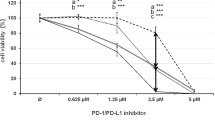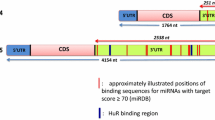Abstract
Tumor necrosis factor (TNF)-α has a broad range of biological activities, which depend heavily on cell type and physiological condition. In a panel of human tumor cell lines we analyzed expression of the receptor tyrosine kinases EGFR, ErbB2 and ErbB3, and the response to TNF-α. Among the cell lines tested those resistant to TNF-α were found to express high levels of either EGFR, or ErbB2 and ErbB3. In TNF-sensitive breast and cervical carcinoma cells activation of EGFR or ErbB2 by the exogenous growth factors EGF and heregulin β1 resulted in a significant increase in the number of cells surviving TNF-α treatment. In contrast, inhibition of EGFR activation in TNF-resistant breast carcinoma cells by the novel antagonistic anti-EGFR antibody 14E1 sensitized the cells to the cytotoxic effects of TNF-α. A bacterially expressed fusion protein consisting of a 14E1 single-chain (sc) Fv antibody fragment linked to human TNF-α retained TNF-α activity. This scFv(14E1)-TNF-α molecule localized specifically to EGFR on the surface of tumor cells and activated the NF-κB pathway in co-cultured T cells, as demonstrated by electrophoretic mobility shift assays.
Similar content being viewed by others
Author information
Authors and Affiliations
Additional information
Received: 6 May 1998 / Accepted: 16 July 1998
Rights and permissions
About this article
Cite this article
Hoffmann, M., Schmidt, M. & Wels, W. Activation of EGF receptor family members suppresses the cytotoxic effects of tumor necrosis factor-α. Cancer Immunol Immunother 47, 167–175 (1998). https://doi.org/10.1007/s002620050517
Issue Date:
DOI: https://doi.org/10.1007/s002620050517




